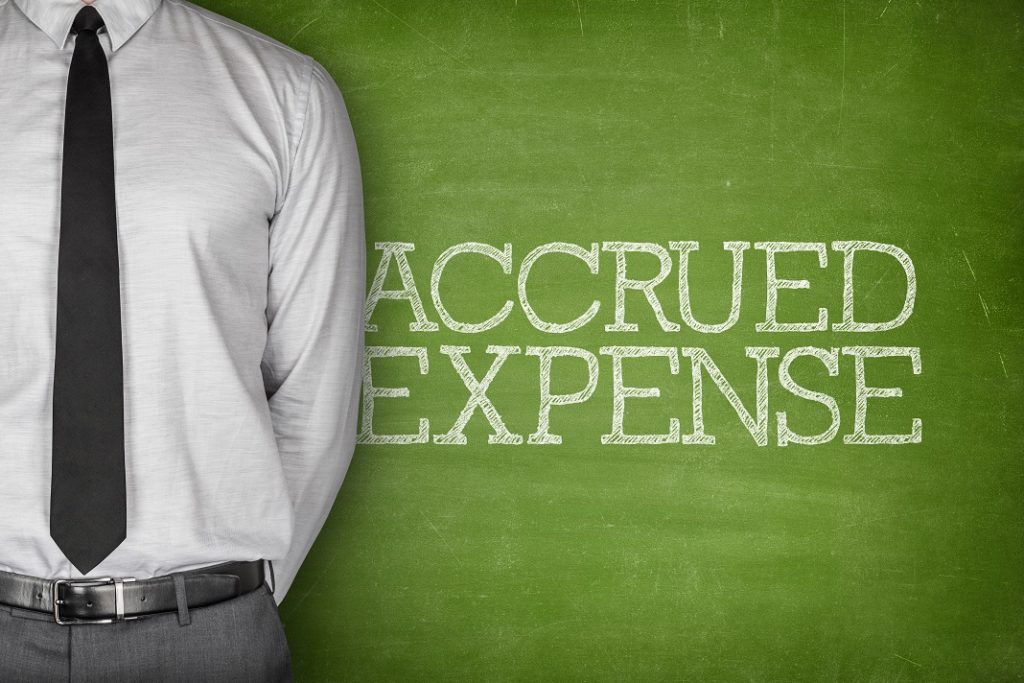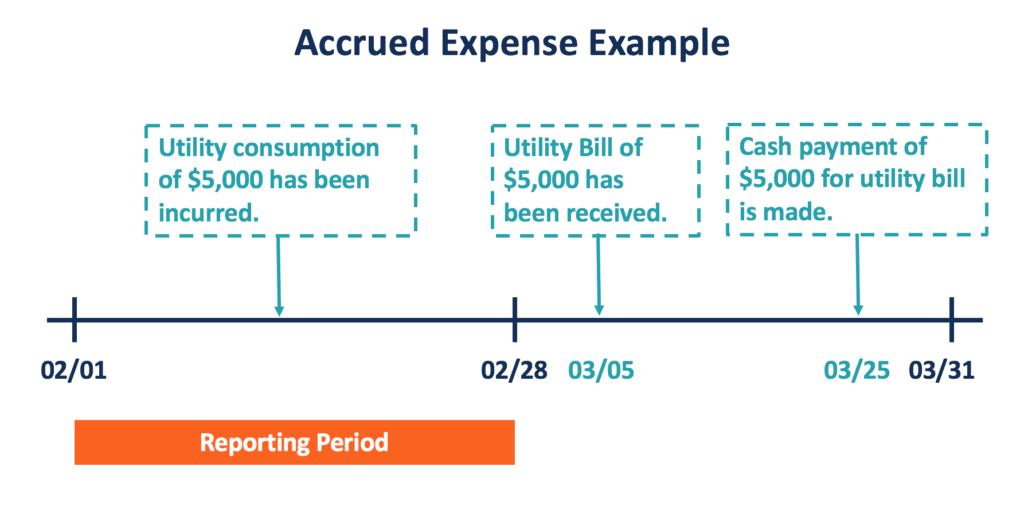Accrued Expense
The type of expense that is recognized when incurred but not yet paid
What is an Accrued Expense?
Accrued expense is a concept in accrual accounting that refers to expenses that are recognized when incurred but not yet paid.

In some transactions, cash is not paid or earned yet when the revenues or expenses are incurred. For example, a company pays its February utility bill in March, or delivers its products to customers in May and receives the payment in June. Accrual accounting requires revenues and expenses to be recorded in the accounting period that they are incurred.
Since accrued expenses are expenses incurred before they are paid, they become a company liability for cash payments in the future. Therefore, accrued expenses are also known as accrued liabilities.
Key Highlights
- Accrued expenses, also known as accrued liabilities, are expenses recognized when they are incurred but not yet paid in the accrual method of accounting.
- Typical accrued expenses include utility, salaries, and goods and services consumed but not yet billed.
- Accrued expenses are recorded in estimated amounts, which may differ from the real cash amount paid or received later.
Accrual Accounting
There are two types of accounting methods: the accrual method and the cash method. The major difference between the two methods is the timing of recording revenues and expenses. In the cash method of accounting, revenues and expenses are recorded in the reporting period that the cash payment is made. This makes it a simpler method of accounting.
The accrual method of accounting requires revenues and expenses to be recorded in the period that they are incurred, regardless of the time of payment or receiving cash. Since the accrued expenses or revenues recorded in that period may differ from the actual cash amount paid or received in the later period, the records are merely an estimate. The accrual method requires appropriate anticipation of revenues and expenses.
Although it is easier to use the cash method of accounting, the accrual method can reveal a company’s financial health more accurately. It allows companies to record their sales and credit purchases in the same reporting period when the transactions occur.
Therefore, the accrual method of accounting is more commonly used, especially by public companies. International Financial Reporting Standards (IFRS) and Generally Accepted Accounting Principles (GAAP) both require companies to implement the accrual method.
Understanding Accrued Expenses
Accrued expenses or liabilities occur when expenses take place before the cash is paid. The expenses are recorded on an income statement, with a corresponding liability on the balance sheet. Accrued expenses are usually current liabilities since the payments are generally due within one year from the transaction date.
Some typical cases of accrued expenses include:
- Goods and services have been consumed, but bills have not yet been received.
- The utility is consumed in one month, and the bill is received in the next month.
- Salaries are not paid to employees until the end of the payment period.
At the end of each recording period, a company should properly estimate the dollar amount for each of its accrued expenses, and then record it as an expense account with a corresponding payable/accrued expense liability.
The format of the journal entry is shown below:

Accrued expenses example
For example, a company consumes $5,000 utility in February. The expense for the utility consumed remains unpaid on the balance day (February 28). The company then receives its bill for the utility consumption on March 05 and makes the payment on March 25.

Under the accrual method of accounting, the entry for the transaction should be recorded in the reporting period of February, as shown below:

On the balance day, the accrued expense of utility is treated as a current liability (accounts payable or accrued expense) owed to the utility company, and an expense (Utility Expense) incurred by the company in February.
In the reporting period of March, the company should record its cash payment on March 25 for its utility bill. This entry removes the liability since the utility bill is paid in cash.

Accrued expenses and prepaid expenses
A related concept under accrual accounting is prepaid expenses. Accrued expenses represent the expenditures incurred before cash is paid, but there are also cases where cash is paid before the expenditures are incurred. Such expenditures are known as prepaid expenses.
Prepaid expenses are an asset on the balance sheet, as the goods or services will be received in the future. Like accrued expenses, prepaid expenses are also recorded in the reporting period when they are incurred under the accrual accounting method. Typical examples of prepaid expenses include prepaid insurance premiums and rent.
In the reporting period that the cash is paid, the company records a debit in the prepaid asset account and a credit in cash. In the later reporting period when the service is used or consumed, the firm will record a debit in expense and a credit to the prepaid asset.
Video Explanation of Accrued Expenses
Watch this short video to quickly understand how accrued expenses work.
Additional Resources
Analyst Certification FMVA® Program
Below is a break down of subject weightings in the FMVA® financial analyst program. As you can see there is a heavy focus on financial modeling, finance, Excel, business valuation, budgeting/forecasting, PowerPoint presentations, accounting and business strategy.
A well rounded financial analyst possesses all of the above skills!
Additional Questions & Answers
CFI is the global institution behind the financial modeling and valuation analyst FMVA® Designation. CFI is on a mission to enable anyone to be a great financial analyst and have a great career path. In order to help you advance your career, CFI has compiled many resources to assist you along the path.
In order to become a great financial analyst, here are some more questions and answers for you to discover:
- What is Financial Modeling?
- How Do You Build a DCF Model?
- What is Sensitivity Analysis?
- How Do You Value a Business?
